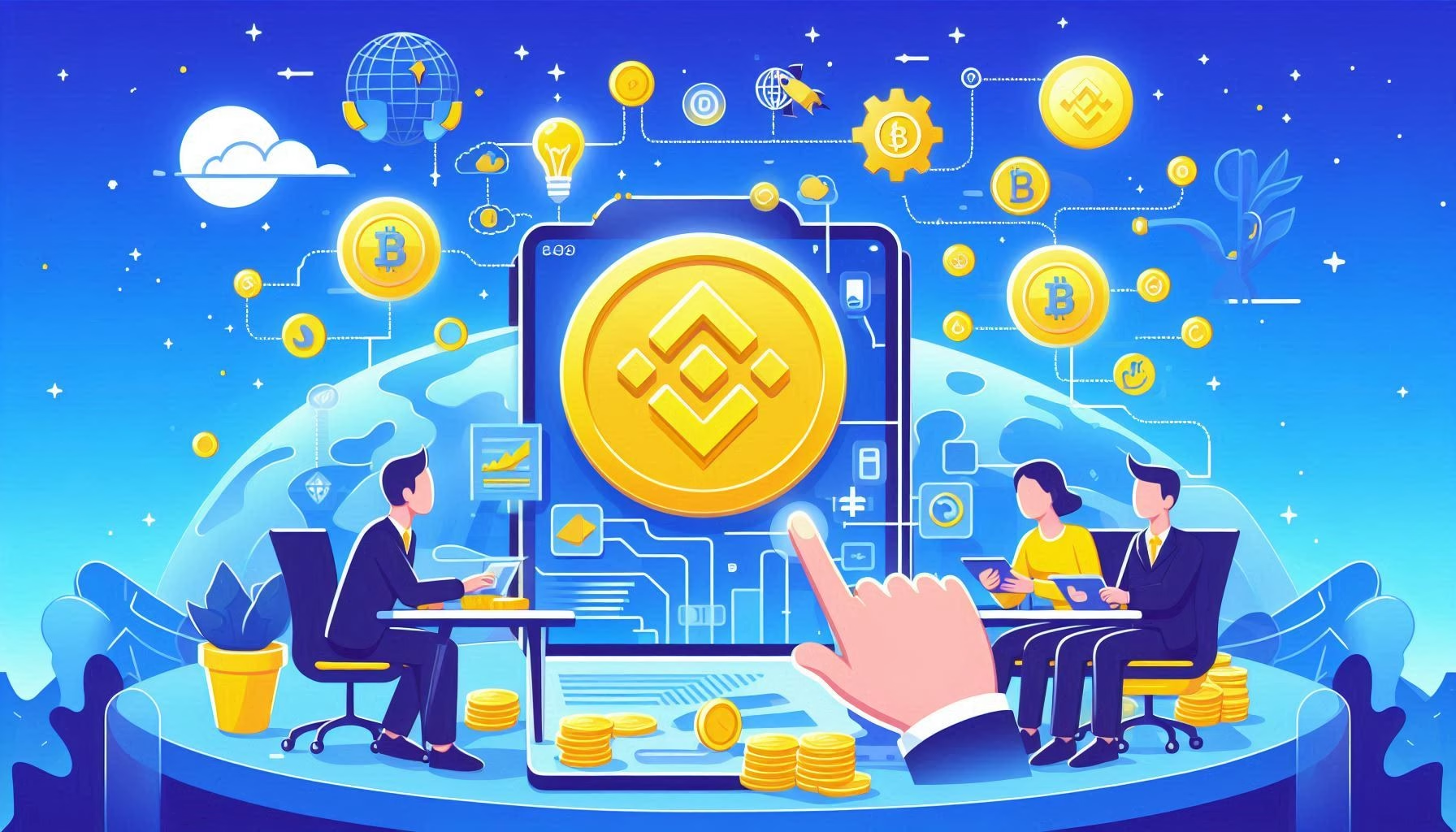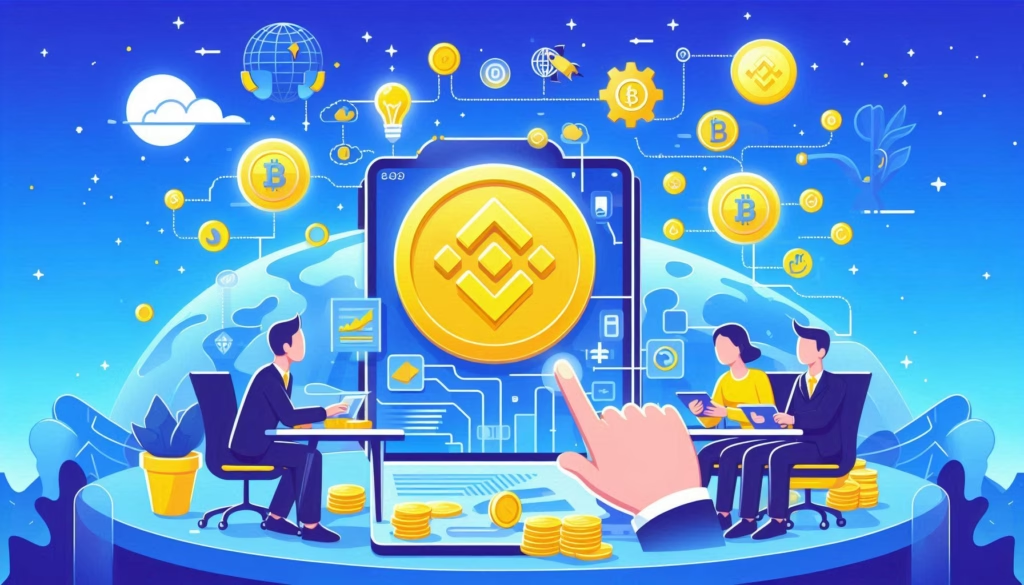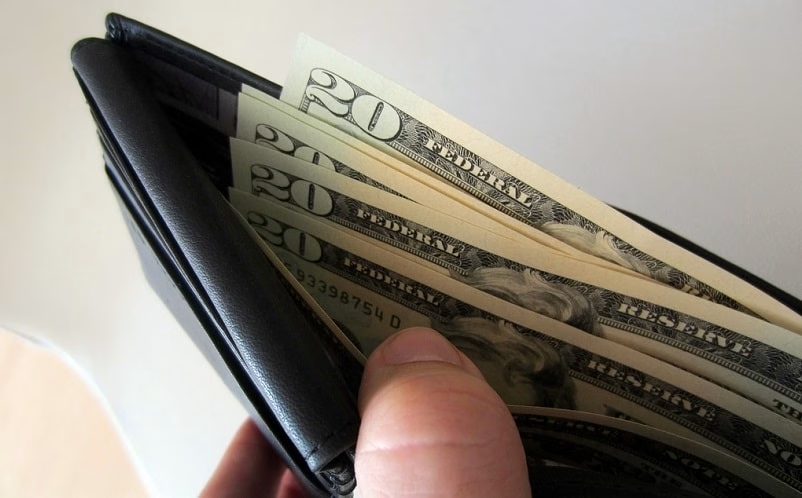Table of Contents
- Overview
- What Is Binance Coin (BNB)?
- The History of Binance and BNB
- How Binance Coin Works: Understanding the Technology
- BNB Chain: The Evolution from Binance Chain to BNB Chain
- Key Features and Use Cases of Binance Coin
- Why Invest in Binance Coin?
- Risks and Challenges of Investing in BNB
- How to Buy Binance Coin (Step-by-Step Guide)
- Choosing the Right Wallet for Your BNB
- Storing BNB Safely
- Security Tips for Crypto Newbies
- Frequently Asked Questions (FAQs)
Overview
In the rapidly evolving world of cryptocurrency, few digital assets have experienced the growth, utility, and ecosystem expansion of Binance Coin (BNB). Originally launched as a utility token to reduce trading fees on the Binance exchange, BNB has transformed into one of the most influential and widely adopted cryptocurrencies in the world.
For new crypto investors, understanding how to get started with Binance Coin can be both exciting and overwhelming. With so many platforms, wallets, strategies, and risksRisk Risk is a loss that occurs to the insured individual or object. Various bad possibilities could happen to someone. involved, it’s essential to approach BNB investment with knowledge, caution, and a clear plan.
This comprehensive guide is designed specifically for beginners who are interested in learning everything about Binance Coin — from its origins and technology to how to buy, store, and use it safely. Whether you’re completely new to cryptocurrency or have some experience with Bitcoin or Ethereum, this article will walk you through every step of entering the BNB ecosystem.
By the end of this guide, you’ll have a solid foundation to confidently invest in BNB, understand its real-world applications, and make informed decisions based on market trends and personal financial goals.
We’ll also cover essential topics like security, staking, passive income opportunities, tax considerations, and future developments that could impact BNB’s value. Our goal is not only to educate but also to empower you with practical knowledge that aligns with best practices in the crypto space.
Let’s begin your journey into the world of Binance Coin.
What Is Binance Coin (BNB)?
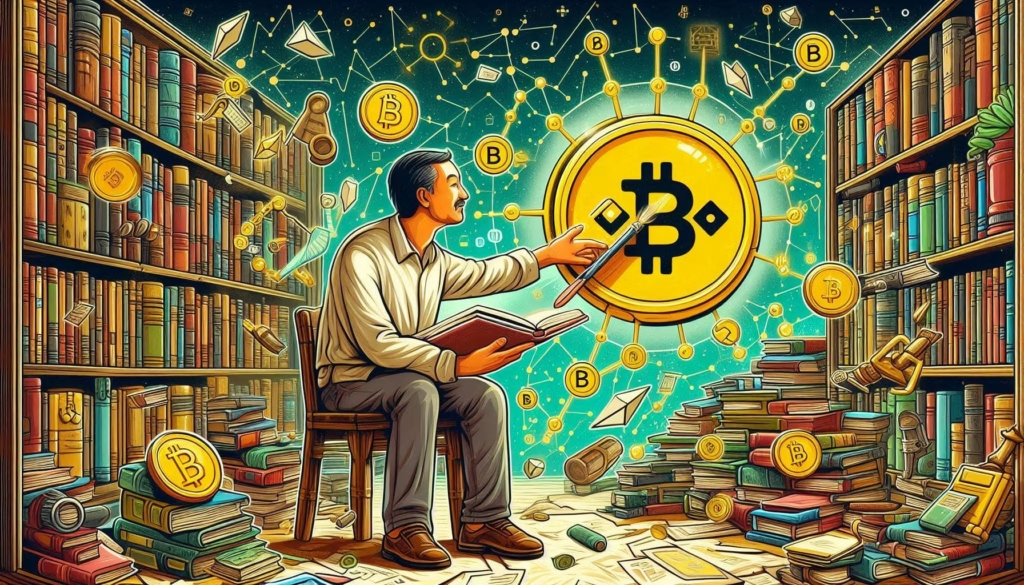
Binance Coin, commonly known by its ticker symbol BNB, is a cryptocurrency originally created by Binance, one of the largest and most popular cryptocurrency exchanges in the world. While it began as a simple utility token, BNB has evolved into a multi-functional digital asset with wide-ranging applications across decentralized finance (DeFi), blockchain infrastructure, and Web3 ecosystems.
At its core, BNB serves as the native cryptocurrency of the BNB Chain, a decentralized blockchain network that supports smart contracts, decentralized applications (dApps), non-fungible tokens (NFTs), and more. However, its role extends far beyond just powering a blockchain.
Key Characteristics of BNB:
- Token Type: Originally an ERC-20 token on Ethereum, now primarily exists as a native coin on BNB Chain.
- Blockchain: BNB Chain (formerly Binance Smart Chain and Binance Chain).
- Supply Model: Initially capped at 200 million BNB; subject to quarterly burns to reduce total supply.
- Consensus Mechanism: Proof of Staked Authority (PoSA), a hybrid model combining elements of Proof of Stake (PoS) and authority validation.
- Primary Use Cases: Paying transaction fees, participating in token sales, staking, DeFi, gaming, NFTs, and more.
Unlike many speculative cryptocurrencies, BNB has real utility. It’s not just a store of value — it powers a vast ecosystem of services, products, and innovations developed by Binance and third-party developers.
For example:
- You can use BNB to pay lower trading fees on the Binance exchange.
- Developers build dApps on BNB Chain using BNB for gas fees.
- Users stake BNB to earn rewards or participate in governance.
- Merchants accept BNB for goods and services via crypto payment gateways.
Because of these practical uses, BNB has maintained strong demand and relevance even during periods of market volatility.
BNB vs. Other Major Cryptocurrencies
| FEATURE | BNB | BITCOIN (BTC) | ETHEREUM (ETH) |
| Primary Purpose | Utility & Ecosystem Token | Digital Gold / Store of Value | Smart Contract Platform |
| Max Supply | 200M (reduced via burns) | 21M | No hard cap |
| Consensus | PoSA | PoW → PoS (post-Merge) | PoS |
| Transaction Speed | ~1 sec | ~10 min | ~12–15 sec |
| Average Fee | <$0.10 | $1–$50+ | $0.50–$50+ |
| Ecosystem Size | Large (DeFi, NFTs, Games) | Limited | Very Large |
As shown above, BNB stands out due to its low fees, fast transactions, and robust ecosystem, making it particularly attractive for everyday users and developers alike.
In short, Binance Coin is much more than just a “Binance exchange token.” It’s a foundational piece of a growing blockchain ecosystem that continues to expand globally.
The History of Binance and BNB
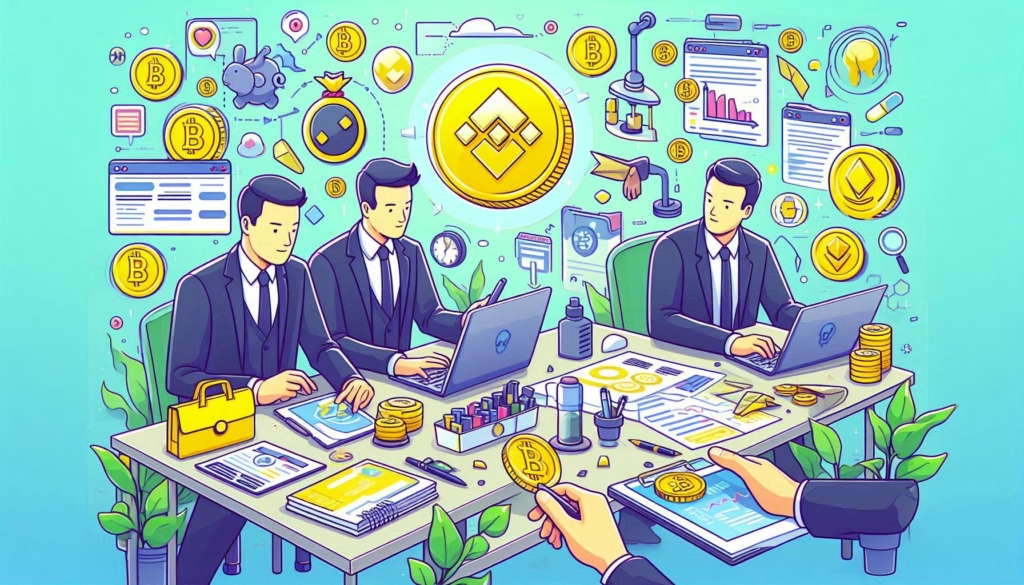
To truly understand Binance Coin, we must first explore the story of Binance, the company behind it.
The History of Binance and BNB No.1
InsuranceWhat.com
Founding of Binance
Binance was founded in 2017 by Changpeng Zhao, commonly known as CZ, a Canadian entrepreneur with a background in software development and financial technology. Before launching Binance, CZ worked at blockchain companies like Blockchain.info and OKCoin, gaining deep insights into cryptocurrency trading systems.
The idea for Binance emerged when existing exchanges struggled to handle the surge in demand during the 2017 Initial Coin Offering (ICO) boom. CZ saw an opportunity to create a faster, more scalable, and user-friendly exchange.
In July 2017, Binance launched its Initial Coin Offering (ICO) to raise funds for the platform. During this ICO, the team sold 100 million BNB tokens, representing 50% of the total initial supply of 200 million. The remaining 100 million were allocated as follows:
- 40% to the founding team and advisors (locked for 1 year)
- 10% to angel investors
Each BNB token was sold for $0.15, raising approximately $15 million in Ethereum (ETH). At the time, few could have predicted how valuable BNB would become.
The History of Binance and BNB No.2
InsuranceWhat.com
Early Growth and Expansion
Within months, Binance became one of the most popular crypto exchanges in the world due to its:
- High liquidity
- Wide range of tradable assets
- User-friendly interface
- Low trading fees
By 2018, Binance was processing over $1 billion in daily trading volume, making it the largest exchange globally by volume.
As the platform grew, so did the utility of BNB. Initially, BNB could only be used to pay for discounted trading fees on the exchange. Over time, Binance expanded its use cases, including:
- Paying for listing fees
- Buying virtual gifts on live streaming platforms
- Booking travel services (via partnerships)
- Participating in IEOs (Initial Exchange Offerings) on Binance Launchpad
The History of Binance and BNB No.3
InsuranceWhat.com
The Birth of Binance Chain and Binance Smart Chain
In 2019, Binance launched Binance Chain, a high-performance blockchain optimized for fast transactions and decentralized exchange (DEX) functionality. BNB became the native coin of this chain, used to pay for transaction fees and participate in governance.
Then, in 2020, Binance introduced Binance Smart Chain (BSC), a parallel blockchain compatible with Ethereum’s tools and smart contracts. This allowed developers to build decentralized applications (dApps) on BSC with lower fees and faster speeds than Ethereum.
In 2022, Binance rebranded Binance Smart Chain to BNB Chain, reflecting the broader vision of BNB as a universal blockchain infrastructure.
The History of Binance and BNB No.4
InsuranceWhat.com
The BNB Burn Mechanism
One of the most unique aspects of BNB is the quarterly token burn. Every quarter, Binance uses a portion of its profits to buy back and destroy BNB tokens, permanently removing them from circulation.
This process reduces the total supply of BNB over time, increasing scarcity and potentially boosting its value.
Originally, Binance committed to burning BNB until the total supply reached 100 million, meaning 100 million tokens would be removed from circulation. As of 2024, Binance has paused regular burns but maintains the ability to resume them under certain conditions.
These burns have played a significant role in shaping investor confidence and long-term price trends.
How Binance Coin Works: Understanding the Technology
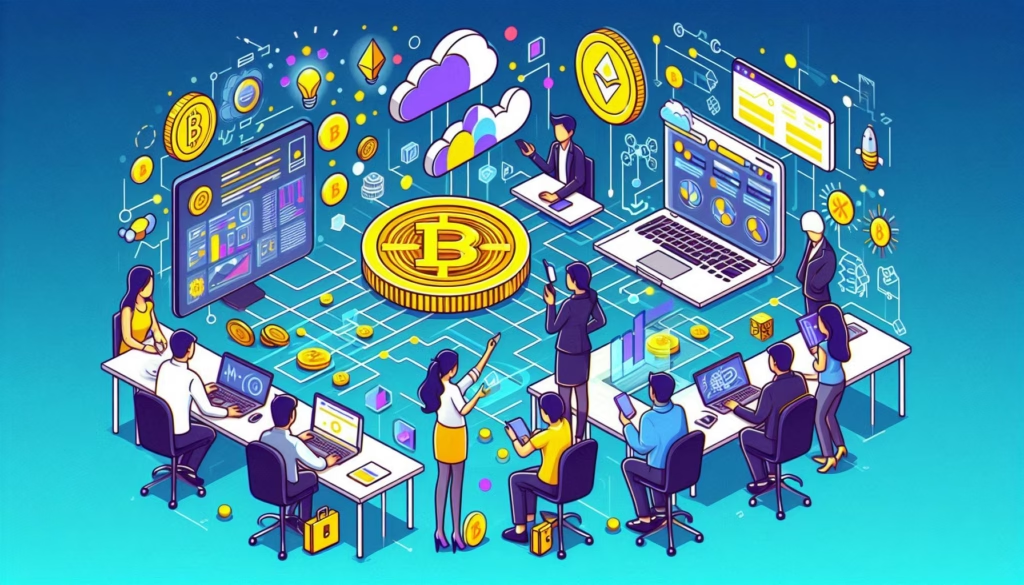
To fully appreciate BNB, it’s important to understand the technology that powers it. Unlike Bitcoin, which runs on a single blockchain, BNB operates within a multi-chain ecosystem, primarily centered around BNB Chain.
Let’s break down how BNB works technically.
How Binance Coin Works No.1
InsuranceWhat.com
The BNB Chain Architecture
BNB Chain is not a single blockchain but a set of interconnected blockchains designed to support scalability, interoperability, and developer flexibility. The main components include:
- BNB Beacon Chain (formerly Binance Chain): Focuses on governance and staking, Handles voting for network upgrades and validator selection, Uses Tendermint-based consensus for fast finality.
- BNB Smart Chain (BSC): Supports smart contracts and dApps, Compatible with Ethereum Virtual Machine (EVM), allowing Ethereum developers to port their apps easily, Uses Proof of Staked Authority (PoSA) consensus.
- OpBNB (Optimistic Rollup for BSC): A Layer 2 scaling solution that reduces congestion and fees, Processes transactions off-chain and submits proofs to BSC.
- zkBNB: A zero-knowledge rollup for privacy and scalability, Enables private transactions and efficient NFT minting.
These layers work together to form a cohesive ecosystem where BNB acts as the primary fuel.
How Binance Coin Works No.2
InsuranceWhat.com
Consensus Mechanism: Proof of Staked Authority (PoSA)
BNB Chain uses a hybrid consensus model called Proof of Staked Authority (PoSA), which combines elements of Proof of Stake (PoS) and authority-based validation.
Here’s how it works:
- There are 28 validator nodes responsible for producing blocks.
- Validators are selected based on the amount of BNB they stake.
- Users can delegate their BNB to validators to earn staking rewards.
- Blocks are produced every 3 seconds, ensuring fast transaction finality.
Compared to Ethereum’s PoS or Bitcoin’s PoW, PoSA offers:
- Lower energy consumption
- Reduced network fees
- Faster transaction speeds
However, it is more centralized than fully decentralized chains like Ethereum, as only a limited number of validators control the network.
How Binance Coin Works No.3
InsuranceWhat.com
Smart Contracts and dApp Development
One of the biggest advantages of BNB Chain is its EVM compatibility. This means developers can use familiar tools like:
- Solidity (programming language)
- Remix IDE
- MetaMask wallet
- Truffle and Hardhat frameworks
To deploy dApps on BNB Chain with minimal changes to their Ethereum-based code.
This compatibility has led to a rapid influx of DeFi protocols, NFT marketplaces, and gaming platforms migrating to BNB Chain due to:
- Lower gas fees (often less than $0.01)
- Faster confirmation times
- Growing user base
Popular dApps on BNB Chain include:
- PancakeSwap (DeFi exchange)
- BakerySwap (NFT marketplace)
- Venus (lending platform)
- Thetan Arena (play-to-earn game)
How Binance Coin Works No.4
InsuranceWhat.com
Token Standards on BNB Chain
BNB Chain supports multiple token standards, enabling diverse digital asset creation:
- BEP-2: Native tokens on Binance Chain (e.g., early BNB)
- BEP-20: Equivalent to ERC-20 on Ethereum; used for fungible tokens on BSC
- BEP-721: NFT standard (like ERC-721)
- BEP-1155: Multi-token standard for games and collectibles
Most new projects issue BEP-20 tokens, making BNB the default currency for transactions and liquidity provision.
How Binance Coin Works No.5
InsuranceWhat.com
Cross-Chain Interoperability
BNB Chain supports cross-chain bridges, allowing users to transfer assets between BNB Chain and other networks like Ethereum, Polygon, and Avalanche.
For example:
- You can bridge ETH from Ethereum to BSC using the BNB Bridge.
- Then swap it for BNB or a BEP-20 token on PancakeSwap.
- Later, bridge back to Ethereum when needed.
While bridges increase utility, they also introduce security risks, as seen in several high-profile hacks (e.g., the $500M Nomad Bridge exploit in 2022). Always use official or audited bridges.
BNB Chain: The Evolution from Binance Chain to BNB Chain
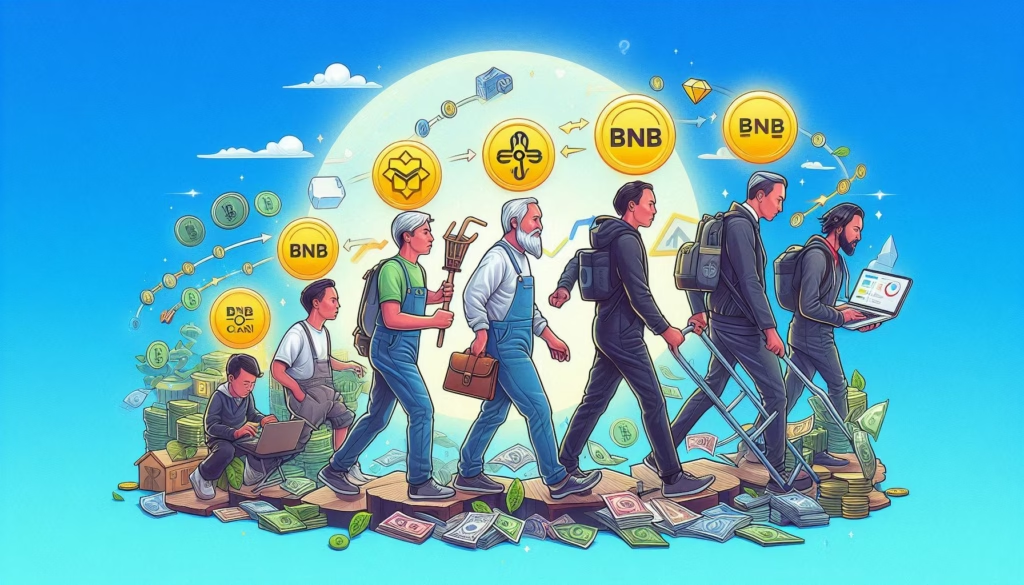
In February 2022, Binance announced a major rebranding: Binance Smart Chain became BNB Chain, and the entire ecosystem adopted the “Build and Build” vision.
This wasn’t just a name change — it reflected a strategic shift toward positioning BNB as a universal infrastructure for Web3, not just a Binance-related token.
Why the Rebrand?
- Global Identity: “Binance” is associated with the centralized exchange. By renaming to “BNB Chain,” the network emphasizes independence and openness.
- Ecosystem Expansion: The new brand supports a wider range of use cases beyond trading — including DeFi, NFTs, GameFi, SocialFi, and metaverse projects.
- Developer Appeal: A neutral name encourages more third-party developers to build without feeling tied to Binance’s corporate brand.
Key Features of BNB Chain
- High Throughput: Can handle up to 300 transactions per second (TPS).
- Low Fees: Average transaction cost is $0.05–$0.10.
- Fast Finality: Transactions confirmed in 3–6 seconds.
- Over 1,500 dApps: One of the largest dApp ecosystems after Ethereum.
- $50B+ in Total Value Locked (TVL) at peak (2021–2022).
BNB Greenfield: Decentralized Storage
A key innovation under the BNB Chain umbrella is BNB Greenfield, a decentralized data storage system where:
- Data ownership is managed via blockchain.
- Users can monetize their data.
- Applications can store files without relying on centralized servers (like AWS).
This positions BNB Chain as a full-stack Web3 platform — not just for finance, but for data, identity, and content.
BNB Sidechains and zkBNB
To further scale the network, BNB Chain supports sidechains — independent blockchains connected to the main chain.
One notable example is zkBNB, a zero-knowledge rollup that enables:
- Thousands of NFT transactions per second
- Private asset transfers
- Lower fees for gaming and social apps
These innovations ensure BNB Chain remains competitive with other Layer 1 and Layer 2 solutions.
Key Features and Use Cases of Binance Coin
Now that we’ve covered the technology, let’s explore the real-world applications of BNB.
Key Features and Use Cases of Binance Coin No.1
InsuranceWhat.com
Paying Trading Fees on Binance
The original use case: discounted trading fees.
If you hold BNB in your Binance account, you can use it to pay for trading fees and receive a 25% discount (as of 2024). This applies to both spot and futures trading.
Example:
- Standard fee: 0.1%
- With BNB: 0.075%
Over time, this adds up — especially for active traders.
Key Features and Use Cases of Binance Coin No.2
InsuranceWhat.com
Participating in Token Sales (Binance Launchpad & Launchpool)
Binance hosts regular Initial DEX Offerings (IDOs) through:
- Binance Launchpad: New projects sell tokens directly to users.
- Binance Launchpool: Users stake BNB or other tokens to earn new project tokens.
Participation often requires holding BNB, giving it direct utility in accessing early-stage investments.
Key Features and Use Cases of Binance Coin No.3
InsuranceWhat.com
Paying for Gas Fees on BNB Chain
Every transaction on BNB Chain (sending tokens, swapping on DEXs, minting NFTs) requires gas fees, paid in BNB.
Even if you’re using other tokens, you need BNB to cover network costs — similar to how ETH is used on Ethereum.
Key Features and Use Cases of Binance Coin No.4
InsuranceWhat.com
Staking and Earning Passive Income
You can stake BNB on Binance or through decentralized platforms to earn rewards:
- Binance Earn: Flexible and locked staking options (4–10% APY)
- DeFi Staking: Provide liquidity on PancakeSwap (higher riskRisk Risk is a loss that occurs to the insured individual or object. Various bad possibilities could happen to someone., higher reward)
Staking helps secure the network and provides consistent returns.
Key Features and Use Cases of Binance Coin No.5
InsuranceWhat.com
NFTs and Gaming
BNB is widely used in:
- NFT Marketplaces: OpenSea (BNB version), Treasureland, BakerySwap.
- Play-to-Earn Games: Thetan Arena, CryptoBlades, MOBOX.
Players buy, sell, and earn in-game assets denominated in BNB or BEP-20 tokens.
Key Features and Use Cases of Binance Coin No.6
InsuranceWhat.com
Travel and E-Commerce Payments
Through partnerships, BNB can be used to:
- Book hotels via TravelbyBit
- Buy gift cards on Bitrefill
- Pay for services on Crypto.com Pay
While adoption is still growing, the goal is to make BNB a real-world payment method.
Key Features and Use Cases of Binance Coin No.7
InsuranceWhat.com
Governance and Voting
Holders of BNB can participate in governance votes on BNB Chain proposalsProposal A collection of information provided by insurance companies regarding policy benefits will be provided to prospective customers. This proposal is usually offered to provide information on the product to be provided, such as the amount of the premium and the terms of coverage., such as:
- Upgrading network parameters
- Funding ecosystem grants
- Approving new validators
This gives investors a voice in the future of the chain.
Key Features and Use Cases of Binance Coin No.8
InsuranceWhat.com
Cross-Chain Transactions
When using bridges to move assets between chains, BNB is often required to pay cross-chain fees.
Why Invest in Binance Coin?

With so many cryptocurrencies available, why should you consider investing in BNB?
Here are seven compelling reasons:
- Strong Ecosystem and Real Utility
Unlike meme coins or speculative tokens, BNB has real, measurable utility across trading, DeFi, NFTs, and Web3. Demand comes from actual usage, not just hype.
- Consistent Demand from Binance Users
Over 200 million registered users on Binance create constant demand for BNB to pay fees, participate in launches, and access premiumPremium The money that must be paid at a certain time is the obligation of the insurance policyholder. The amount of premium paid is determined by the policy and approval of the insurance company in accordance with the conditions of the insured. The nominal payment approved by policyholders and insurance companies. Premium payment will be made according to the agreement, it can be monthly, yearly, or according to the agreement. features.
- Supply Reduction Through Burns
The quarterly burn mechanism reduces supply over time, creating deflationary pressure. Even with paused burns, the historical trend supports long-term scarcity.
- High Adoption in DeFi and dApps
BNB Chain is the second-largest DeFi ecosystem after Ethereum. More dApps mean more transactions, more gas fees, and more BNB demand.
- Strategic Partnerships and Global Expansion
Binance has partnered with governments, payment processors, and fintech firms in Asia, Africa, and Latin America to promote BNB adoption.
- Innovation and Roadmap
Ongoing development in Layer 2, zk-proofs, AI integration, and green energy initiatives shows Binance’s commitment to long-term growth.
- Historical Performance
Since its ICO at $0.15, BNB has reached highs above $690, delivering over 450,000% return for early investors.
While past performance doesn’t guaranteeWarranty Statement A statement issued by a potential customer regarding the condition of the person or thing insured. future results, the track record demonstrates strong market confidence.
Risks and Challenges of Investing in BNB
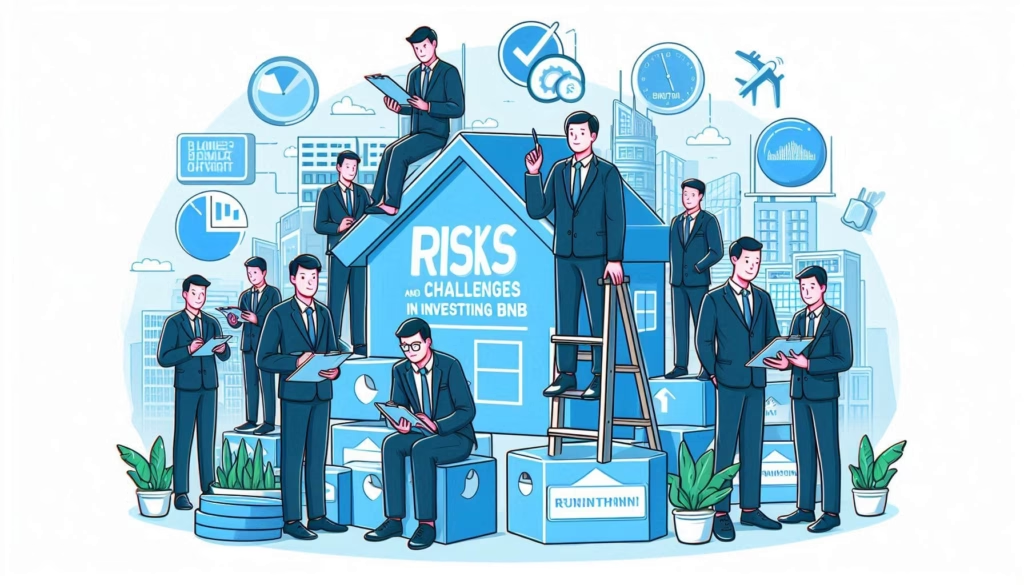
Despite its strengths, BNB is not without risks.
Risks and Challenges No.1
InsuranceWhat.com
Regulatory Uncertainty
Binance has faced regulatory scrutiny in the U.S., UK, EU, and Canada. In 2023, the SEC filed a lawsuit alleging BNB is an unregistered security.
While BNB remains tradable in most regions, regulatory actions could impact its price and usability.
Risks and Challenges No.2
InsuranceWhat.com
Centralization Concerns
BNB Chain relies on only 28 validators, many of which are controlled by Binance or affiliated entities. This raises concerns about decentralization and censorship resistance.
Risks and Challenges No.3
InsuranceWhat.com
Competition from Other Chains
Ethereum, Solana, Cardano, and Polygon offer similar DeFi and dApp capabilities. If BNB Chain fails to innovate, users may migrate.
Risks and Challenges No.4
InsuranceWhat.com
Smart Contract and Bridge Risks
DeFi protocols and cross-chain bridges on BNB Chain have been hacked in the past. Always research projects before investing.
Risks and Challenges No.5
InsuranceWhat.com
Market Volatility
Like all cryptocurrencies, BNB is highly volatile. Prices can swing 20–50% in a single day based on news, sentiment, or macroeconomic factors.
Risks and Challenges No.6
InsuranceWhat.com
Dependence on Binance
A significant portion of BNB’s value is tied to the success of Binance. If the exchange faces operational or legal challenges, BNB could suffer.
How to Buy Binance Coin (Step-by-Step Guide)
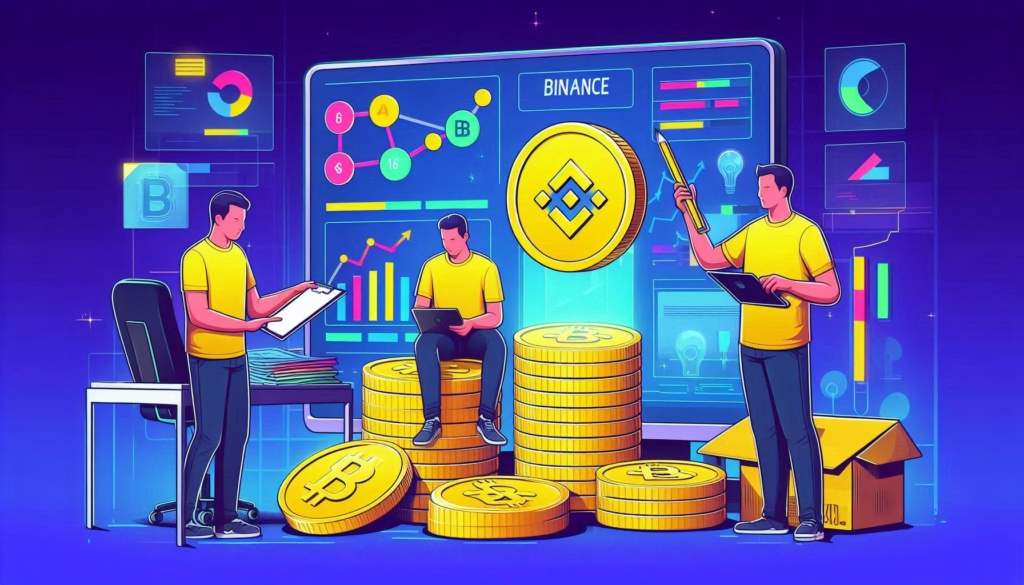
Now, let’s walk through how to buy BNB safely.
Step 1: Choose a Reliable Exchange
Recommended platforms:
- Binance.com (largest selection, lowest fees)
- Binance.US (for U.S. residents)
- Coinbase
- Kraken
- Crypto.com
For beginners, Binance offers the most features and liquidity.
Step 2: Create an Account
- Go to binance.com
- Click “Register”
- Enter email and create a strong password
- Complete identity verification (KYC)
Step 3: Deposit Funds
You can deposit:
- Fiat currency (USD, EUR, etc.) via bank transfer, card, or P2P
- Cryptocurrency (BTC, ETH, USDT) from another wallet
For first-time buyers, use credit/debit card or bank transfer.
Step 4: Buy BNB
- Go to “Buy Crypto” > “Credit/Debit Card”
- Select BNB as the cryptocurrency
- Enter the amount in fiat or BNB
- Confirm payment
Alternatively, buy USDT first, then trade for BNB on the spot market.
Step 5: Withdraw to a Personal Wallet (Recommended)
For security, do not keep large amounts on exchanges. Withdraw to a private wallet (see next section).
Choosing the Right Wallet for Your BNB
There are two types of wallets:
- Hot Wallets (Connected to Internet)
- Trust Wallet (official Binance wallet)
- MetaMask (for BNB Chain)
- Coinbase Wallet
Best for frequent trading.
- Cold Wallets (Offline)
- Ledger Nano X
- Trezor Model T
Best for long-term storage.
Ensure your wallet supports BEP-20 tokens for BNB Chain.
Storing BNB Safely
- Use hardware wallets (Ledger, Trezor) for long-term storage.
- Trust Wallet and MetaMask support BNB (on BEP-20).
- Always back up your seed phrase and never share it.
Security Tips for Crypto Newbies
- Enable device and email security alerts.
- Avoid phishing links and suspicious DMs offering crypto rewards.
- Use cold storage for large amounts.
Frequently Asked Questions (FAQs)
Q: Is BNB a good investment?
A: It depends on your risk tolerance and belief in the Binance ecosystem. Historically strong, but volatile.
Q: Can I mine BNB?
A: No. BNB is not mineable. It’s distributed via sales, staking, and rewards.
Q: How many BNB are left?
A: Around 130 million in circulation (as of 2024), down from 200 million due to burns.
Q: Where can I spend BNB?
A: On Binance, travel sites, NFT platforms, and select merchants.
Q: Is BNB safer than other cryptos?
A: It has strong fundamentals but carries regulatory and market risks.
The Conclusion
Binance Coin (BNB) has come a long way from its origins as a simple exchange token. Today, it powers a vast, growing ecosystem of decentralized applications, financial services, and Web3 innovations.
For new crypto investors, getting started with BNB is a smart way to gain exposure to a high-utility, widely adopted cryptocurrency with real-world use cases.
By following this guide — understanding the technology, buying securely, storing safely, and exploring earning opportunities — you can confidently navigate the world of BNB.
Remember: Do your own research (DYOR), start small, and never invest more than you can afford to lose.
The future of BNB looks promising, driven by continuous innovation, global adoption, and a passionate community.
Welcome to the BNB ecosystem — your journey into the future of finance starts now.
Do you think you have other ideas about How to Get Started with Binance Coin: A Simple Guide for New Crypto Investors? You can comment and share your thoughts below, or discuss more in the InsuranceWhat Forum. Also, read more articles about GLOBAL INSURANCE or other interesting insurance topic articles only at InsuranceWhat.com.

